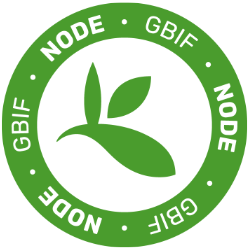The National Science Foundation's Advancing Digitization of Biodiversity Collections (ADBC) program seeks to enhance and expand the national resource of digital data documenting existing vouchered biological and paleontological collections and to advance scientific knowledge by improving access to digitized information (including images) residing in vouchered scientific collections across the United States. The information associated with various collections of organisms, such as geographic, paleogeographic and stratigraphic distribution, environmental habitat data, phenology, information about associated organisms, collector field notes, and tissues and molecular data extracted from the specimens, is a rich resource providing the baseline from which to further biodiversity research and provide critical information about existing gaps in our knowledge of life on earth. The national resource is structured at three levels: a central coordinating organization (iDigBio), a series of thematic networks (TCNs) based on an important research theme, and the physical collections. The national resource builds upon a sizable existing national investment in curation of the physical objects in scientific collections and contributes vitally to scientific research and technology interests in the United States. It will become an invaluable tool in understanding contemporary biological issues and challenges.
Digitizing and mobilizing the Nation's biological and paleontological collections represents a grand challenge and will require development of both technical and human resources to support the creation of an enduring digital alliance of collections and institutions. In 2011, Integrated Digitized Biocollections (iDigBio) at the University of Florida was established as a national resource to integrate all resulting data and make them widely accessible. In addition, iDigBio provides training opportunities, disseminates best practices and workflows, hosts workshops, virtual meetings and integrates education and outreach activities from the Thematic Networks (TCNs). For the purposes of the ADBC program, collections digitization is defined broadly to include the capture of digital images of specimens, transcription into electronic format of various types of data associated with specimens, linking ancillary data already stored in an electronic format apart from the voucher specimens, the georeferencing of specimen-collection localities, and mobilization of all the data together online. In all cases, the primary focus of the digitization effort should be the physical specimens owned by the collection. Ancillary material may be included as appropriate through links to the specimens. Paleontological collections are included and may be integrated with biological collections if relevant to a research theme, or may be digitized around a research theme unique to the past. This program will create an organizational structure and processes inclusive of the broad biological and paleontological collections community, provide open data access, and empower biological and paleobiological researchers.
iDigBio and the TCNs are the primary resources within ADBC that execute the digitization and data integration from vouchered scientific collections. An equally important element of the digitization effort is the community of tool developers and technology innovators that drives improvements in the effectiveness and efficiency of digitizing specimens and managing the data. The broader community, known as the Biodiversity Collections Network (BCoN), formerly the Network Integrated Biocollections Alliance (NIBA), contains the key participants involved in tool development and technology innovation.
Please review the following links to learn more about the NSF ADBC program.







